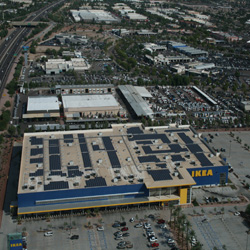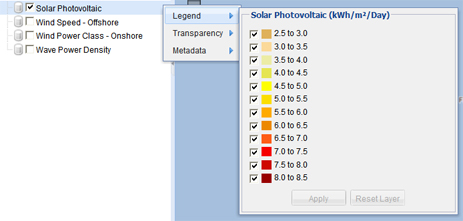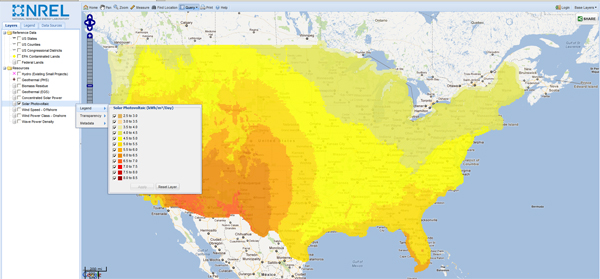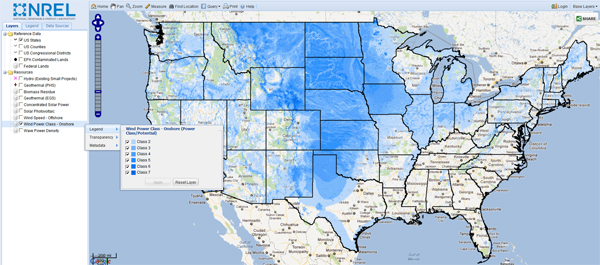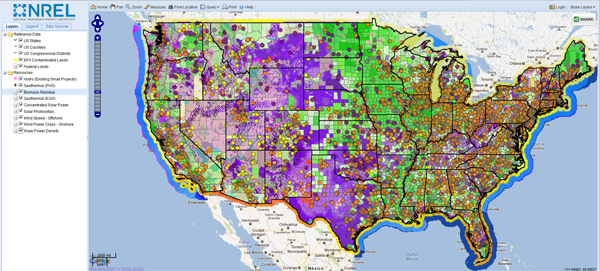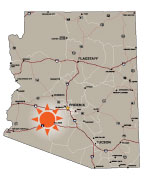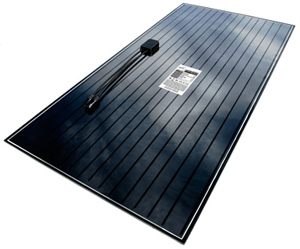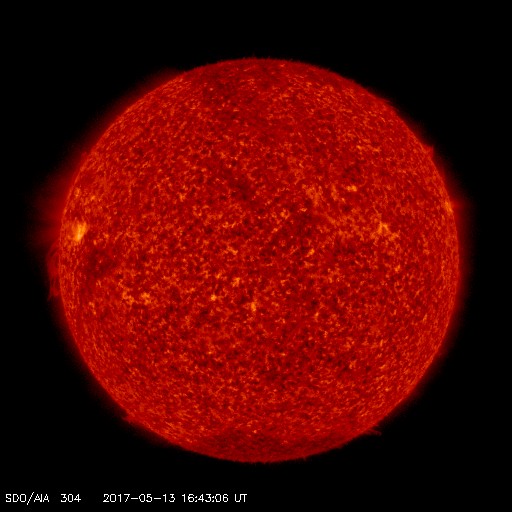NREL’s Renewable Energy Atlas
So, you’re surfing the Intertubes and read that the IKEA store in Tempe, Arizona, is having a sale on that Björkna serving dish you’ve been wanting.
And, wait, what’s this? The store had added a 600-kWh solar array to its roof. Cool.
That begs the question: how many watt-hours per square meter can be produced on an average day on the rooftop? (Granted, the question only begs lutefisk-loving, Web-browing, bargain-hunting, IKEA-shopping residents in Tempe, Arizona, with an interest in renewable energy — but they deserve to be a stand-in for an average consumer as much as the next person.)
How do you find the answer to that this burning question? Easy, you use the Renewable Energy Atlas, a new mapping tool created by the National Renewable Energy Laboratory in Boulder, Colorado.
Just surf over to the Renewable Energy Atlas (RE Atlas) and select Solar Photovoltaic from the list of resources on the “Layers” tab on the left.
Then, click on “Find Location” in the tool bar at the top of the page, type in IKEA’s address, and click “OK.”
Ta-da! That giant roof in the sun can soak up 6,490.6 Wh/m2/day.
Granted, the new geospatial tool is probably more practical for an energy consultant trying to figure out how much power a proposed roof could produce at the IKEA story. However, I’m a generalized map/info geek and the first example is more along the lines of how I roll (i.e., down any of the countless wonderful rabbit-holes lurking on-line).
Dan Getman, leader of the NREL team that designed the new mapping tool, described item at Friday’s unveiling: “Ease of use and breadth of data make RE Atlas an excellent tool for policymakers, planners, energy developers, and others who need to better understand the renewable resources available in the United States.” He added, “RE Atlas is an important addition to NREL’s suite of geospatial tools, because it brings together so many renewable energy datasets in one easy-to-use tool.”
You can, for example, isolate your renewable energy source, and see what section of the country has the most potential for tapping into it. Here’s the U.S. map for solar PV.
Wind:
Biomass:
(One word of advice: always reset the energy resource to just the one you want when starting a search. The atlas has more power under the hood than a Bugatti Veyron, and it’s best to start out slowly until you get a feel for it. Here’s all the data at once.)
There are lots of good mapping tools out there, but for depth and breathe of renewable energy potential, and for ease of use, the RE Atlas is the new standard.
Filed under: All,Renewables,Solar
Trackback Uri

